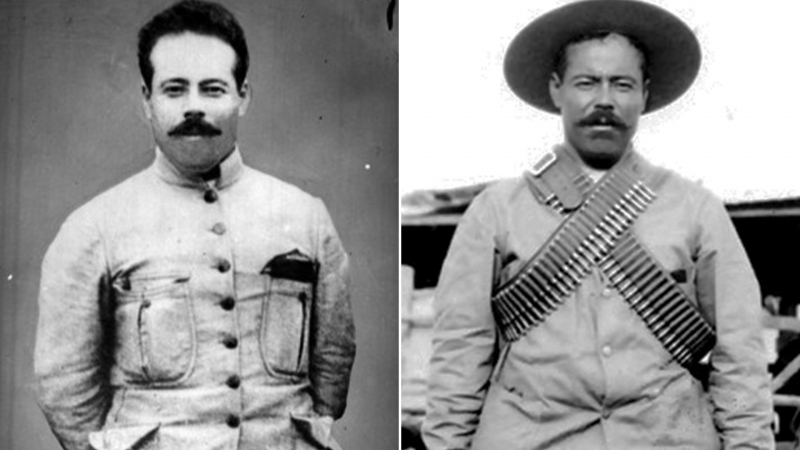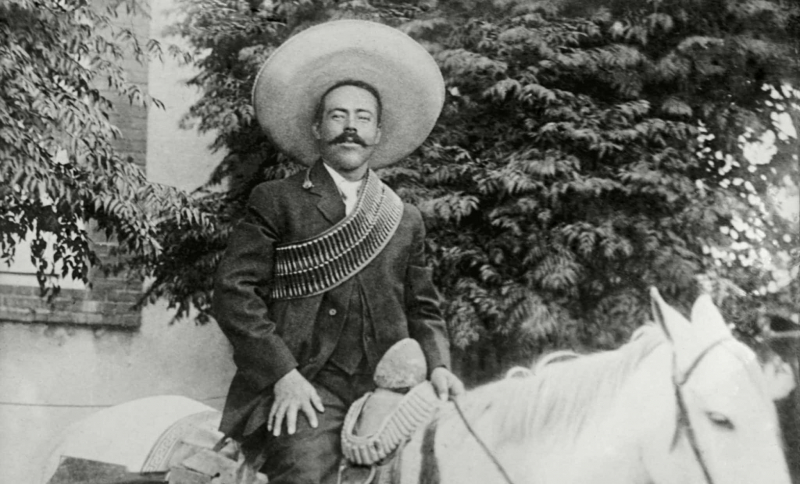Pancho Villa
Francisco "Pancho" Villa (born José Doroteo Arango Arámbula, 5 June 1878 - 20 July 1923) was a Mexican Revolutionary War general. He was a pivotal figure in the revolutionary movement that deposed President Porfirio Díaz and installed Francisco I. Madero as President in 1911. When Madero was deposed in February 1913 by a coup led by General Victoriano Huerta, he led anti-Huerta forces in the Constitutionalist Army 1913-1914. Venustiano Carranza, the civilian governor of Coahuila, led the coalition. Villa broke with Carranza after Huerta's defeat and exile in July 1914. Villa presided over a meeting of revolutionary generals that excluded Carranza and aided in the formation of a coalition government. During this time, Emiliano Zapata and Manuel Villa became formal allies, but only in theory. Villa, like Zapata, was a strong supporter of land reform, but his plans were not carried out while he was in power.
At the height of his power and popularity in late 1914 and early 1915, the United States considered recognizing him as Mexico's legitimate authority. Villa was decisively defeated by Constitutionalist General lvaro Obregón in the summer of 1915, and the United States aided Carranza directly against Villa in the Second Battle of Álvaro Obregón in November 1915. Villa, enraged by the United States' assistance to Carranza, conducted a raid on the border town of Columbus, New Mexico in 1916-17 to provoke the United States to invade Mexico. Despite a large contingent of soldiers and cutting-edge military technology, the United States was unable to capture Villa. When President Carranza was deposed in 1920, Villa negotiated an amnesty with interim President Adolfo de la Huerta and was given a landed estate in exchange for his political retirement. In 1923, he was assassinated. Despite the fact that his faction did not win the Revolution, he is one of its most charismatic and prominent figures.
During his life, Villa helped shape his own image as an internationally known revolutionary hero, starring as himself in Hollywood films and giving interviews to foreign journalists, most notably John Reed. After his death, he was excluded from the pantheon of revolutionary heroes until the Sonoran generals Obregón and Calles, whom he fought against during the Revolution, had passed away. Villa's exclusion from the official Revolutionary War narrative may have contributed to his posthumous popular acclaim. Corridos, films about his life, and novels by prominent writers all paid tribute to him during the Revolution and long after. In 1976, his ashes were reburied in Mexico City's Monument to the Revolution in a massive public ceremony.









